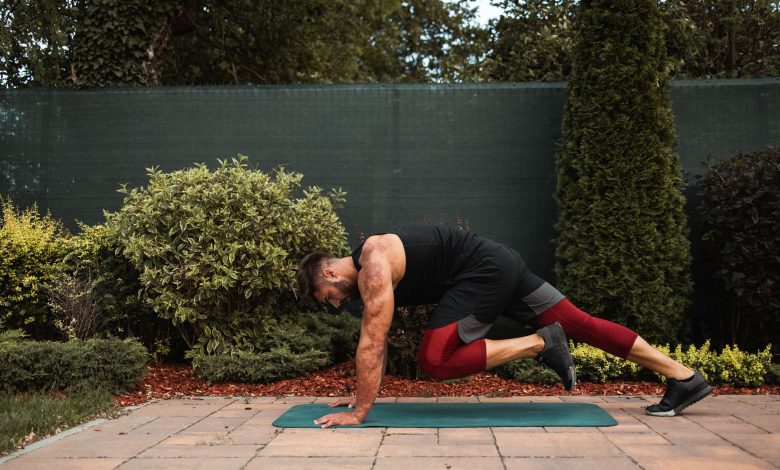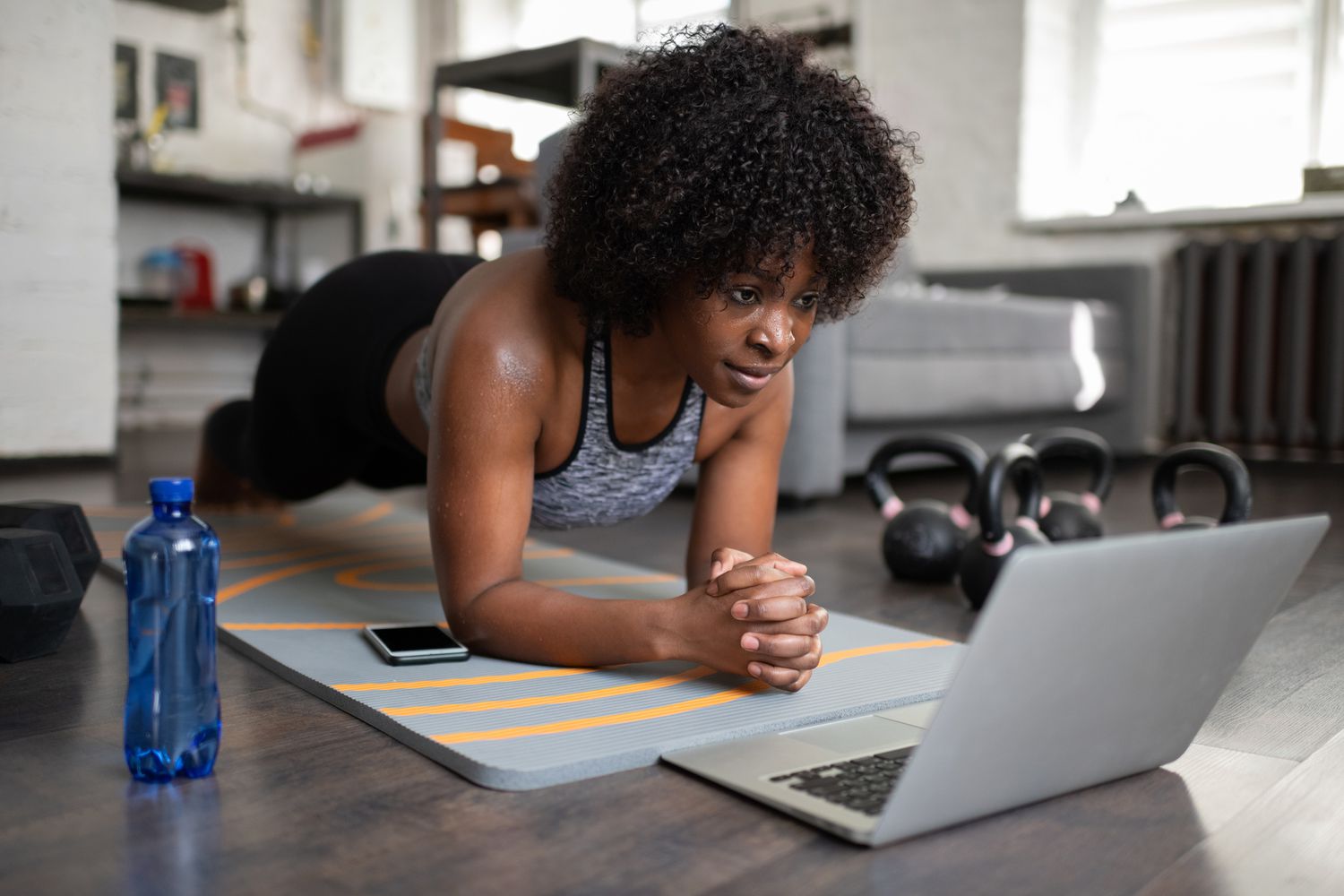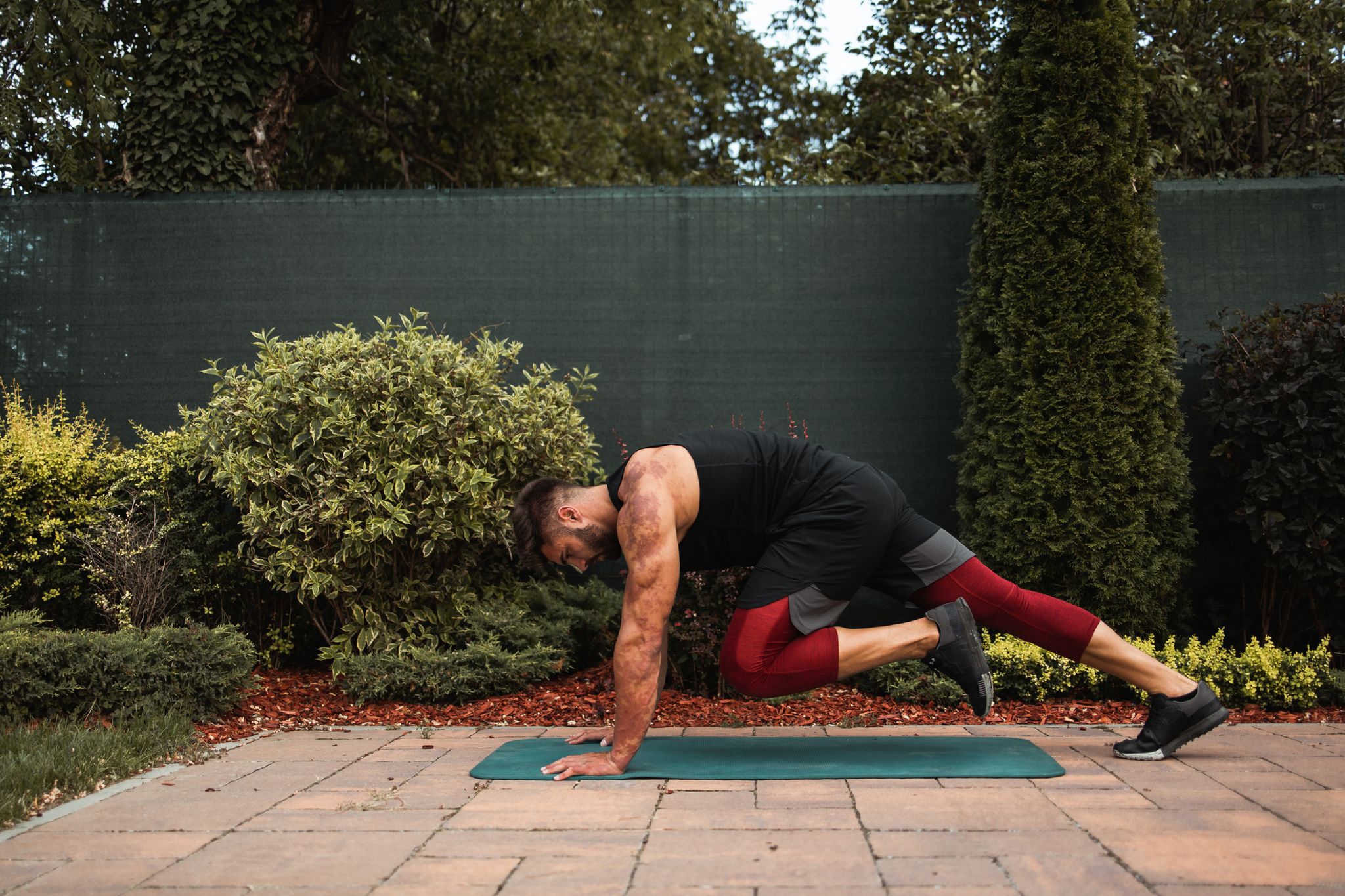How to start a new fitness routine at home (Step by Step Guide)

How to start a new fitness routine at home (Step by Step Guide): Starting a new fitness routine from the comforts of your home may be a life-changing experience that will improve not just your physical health but also your general well-being. Enoughinfo.com
Read Also: How to lose weight without exercise(The Ultimate Guide)
Imagine a route to a better, more energetic version of yourself as you approach this thrilling journey. Your house offers a distinctive and practical area where you may customise your exercises to fit your schedule and interests. We’ll go over the necessary actions and important factors to start a home workout regimen in this guide, making sure it’s a fun and long-lasting commitment to your health.

There are several sorts of exercise, such as:
- Callisthenics: These manoeuvres are often executed without the use of gym equipment and involve big muscle groups. They are completed at a medium aerobic speed. Lunges, situps, pushups, and pullups are among examples.
- Aerobic: Any fitness programme should incorporate some type of continuous activity at its heart. Swimming, jogging, and dancing are a few examples.
- Strength: These workouts aid in the development of muscle power and strength. Resistance training, plyometrics, weightlifting, and sprinting are among examples.
- Stability or balance: The purpose of these workouts is to enhance body coordination and build muscle. Pilates, tai chi stances, and core-strengthening workouts are a few examples.
- Flexibility: These workouts promote range of motion, aid in muscle healing, and guard against injuries. Yoga and individual muscle-stretching exercises are two examples.
- HIIT: This stands for high-intensity interval training Short bursts of high-intensity exercise are followed by low-intensity workouts or rest intervals in this form of exercise.
Read Also: 15 Low-Impact Exercises For Pregnant Women
How to start a new fitness routine at home: A Step by Step Guide
1. Examine your health
Before beginning an exercise plan, see your healthcare professional and undergo a physical medical assessment. This is especially true for those who are new to demanding and intensive physical activity. An early checkup can discover any health issues or diseases that may put you at risk of injury while exercising.
It can also assist you in optimising your workout, making it easier for you and your personal trainer, if you want to work with one, to understand your limitations and design an exercise plan tailored to your specific needs.
2. Create a strategy and achievable goals
Once you’ve made the decision to begin regular exercise, make an effort to come up with a plan with realistic objectives and actions.
Starting with an easy-to-follow set of steps is one method to accomplish this. As your fitness level increases, you can keep improving on it. If your objective is to complete a 5-kilometer run, for instance, you might begin by creating a schedule that incorporates shorter runs.
Increase the distance until you can complete the five kilometres in a single session once you can complete those shorter runs. Setting modest, attainable goals at the outset will boost your chances of success and keep you engaged along the journey.
Read Also: How To Set And Achieve Meaningful Goals In Life

3. Gather Necessary Equipment
Depending on your chosen workouts, gather the essential equipment. This might include dumbbells, resistance bands, a yoga mat, or cardio equipment like a jump rope.
4. Design Your Workout Space:
Make a dedicated, cosy workout area in your house. Make sure it is air-conditioned and well-lit. Setting up a specific space for your workouts aids in routine establishment and mental preparation.
Read Also: Design your workout space
6. Choose Suitable Workouts
Select exercises that align with your goals and suit your fitness level. Include a mix of cardiovascular exercises, strength training, and flexibility workouts to ensure a well-rounded routine.
6. Develop the habit
Maintaining your schedule is essential to success when exercising. Making regular exercise a habit seems to make it easier for people to stick with it over the long run. A comprehensive analysis of research findings indicated that substituting a harmful habit with a new, healthful one is a great way to keep it up over time.
Read Also: How To Be Better At Something
In addition, scheduling your workouts or exercising at the same time each day are helpful strategies for maintaining and extending your programme.
One way to develop a habit of exercising is to schedule daily workouts right after work or first thing in the morning. Selecting a time that is most convenient for
7. Warm-Up and Cool-Down
Make sure that every session includes a complete warm-up and cool-down. This encourages flexibility and helps avoid injuries. Light cardio exercises or dynamic stretches provide great warm-up options.
Read Also: How To Do Yoga At Home For Beginners
8. Examine Internet Resources
Make use of the abundance of fitness-related websites. Numerous websites, YouTube channels, and apps provide guided workouts for a range of fitness levels and objectives.
9. Change Up Your Routine
Add variation to your routines to keep them engaging. To avoid boredom and plateaus, this could entail experimenting with new workout routines, techniques, or intensities.
Read Also: Outdoor Fitness Exercises Safe for Seniors (Best 15)

11. Monitor Your Progress
To maintain motivation, keep track of your accomplishments. Monitor improvements in your general fitness, strength, and endurance. To stay motivated on your fitness quest, acknowledge and celebrate your minor wins.
12. Eat Healthily and Stay Hydrated
Nutrition and hydration are essential components of your fitness journey. Focus on eating a balanced diet that will help you reach your fitness objectives and drink enough of water.
Conclusion
It can be difficult to begin a workout routine. On the other hand, setting realistic goals will support your long-term exercise programme maintenance. There are a wide variety of physical activities available. Once you’ve found a handful that work for you, make sure to occasionally switch them up.
The idea is to increase your level of fitness gradually, start out slowly, and occasionally give your body a break to help prevent injuries. You may stay motivated and accomplish your goals by taking actionable steps like participating in a virtual group class or keeping track of your progress.
In order to keep an eye on your health, it’s also critical to maintain a nutritious diet, drink plenty of water, and see your doctor frequently.
FAQs & Answers
1. How can I maintain my motivation to follow my schedule?
Answer: Find something you enjoy doing, monitor your progress, and set reasonable expectations. For encouragement and support, think about exercising with a friend or participating in online fitness communities.
2. If I’m experiencing pain when working out, what should I do?
It is natural to suffer some discomfort; however, you should cease the activity immediately if you feel severe pain. If the discomfort doesn’t go away, see a doctor. Pay attention to your body’s signals and modify accordingly.
3. Do I require expensive gear?
No, you can begin with simple tools like yoga mats, dumbbells, and resistance bands. You can perform a lot of efficient exercises with simply your body weight.




